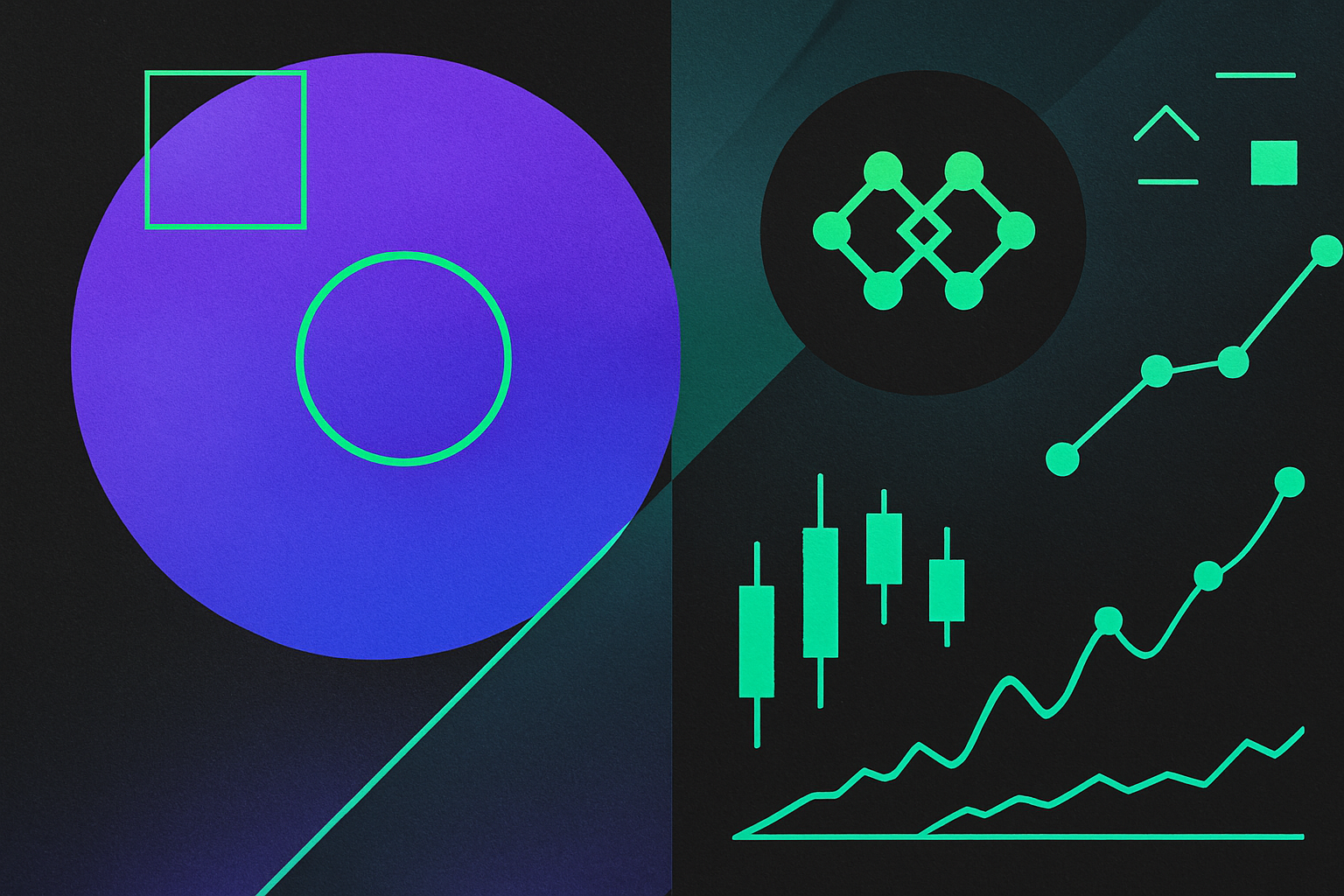How Celestia Data Blobs Power Scalable Rollups: A Deep Dive Into Blobspace Markets

Celestia is quietly reshaping the blockchain landscape by decoupling data availability from execution, empowering a new generation of scalable rollups. As of today, Celestia’s native token TIA trades at $1.70, reflecting a market that is rapidly evolving amid surging demand for modular data availability solutions. In this deep dive, we explore how Celestia data blobs underpin scalable rollups and analyze the emerging dynamics within blobspace markets.
Why Data Availability Matters for Rollups
Traditional blockchains like Ethereum face scalability bottlenecks because every node must process and store all transaction data. Rollups address this by executing transactions off-chain and posting compressed proofs back to the main chain. However, these rollups still need a reliable way to make their transaction data available to anyone who wants to verify it, a challenge known as data availability.
This is where Celestia’s architecture shines. By acting as a dedicated data availability (DA) layer, Celestia allows rollups to publish their transaction data as blobs. Validators on the Celestia network ensure these blobs are available and ordered, while anyone can independently verify their presence without needing to re-execute transactions or download the full dataset.
Inside Blobspace: The Engine of Modular Scalability
The term blobspace refers to the capacity within Celestia’s network that is allocated for storing these data blobs. This blobspace is not just technical infrastructure, it’s an emerging market in its own right, where demand from rollups directly translates into utilization and value.
Rollup projects such as Hibachi, Kamigotchi, and Eclipse are already leveraging Celestia’s blobspace to post vast amounts of transaction data without congesting base layers like Ethereum or Cosmos chains. In December 2024, Eclipse, a modular Ethereum Layer 2, drove a staggering 4,300% surge in transactions, pushing Celestia’s network to process over three times more blob data than Ethereum during that period (source). This real-world stress test validated both the scalability and resilience of blobspace markets.
The Role of Blobstream: Proving Data Availability Across Chains
A pivotal innovation powering this ecosystem is Blobstream, a protocol developed by Celestia Labs that streams commitments of Celestia’s DA layer directly into other chains like Ethereum. Blobstream uses an on-chain light client to relay compact proofs that specific blobs have been published and are available on Celestia, without requiring every participant to download or verify entire blobs themselves.
This mechanism radically improves efficiency for both optimistic and zero-knowledge rollups. By offloading the heavy lifting of data availability onto Celestia via Blobstream, developers can focus on building specialized execution environments while inheriting robust DA guarantees from a decentralized proof-of-stake network (source). Light nodes play a crucial role here, they can detect if validators attempt censorship or withhold data, holding them accountable through slashing mechanisms.
Current Market Dynamics: Adoption Accelerates in 2025
The past year has seen rapid adoption of Celestia-powered rollup technology across multiple ecosystems. Notably, in July 2025 the Celestia Foundation executed a $62.5 million buyback of 43.45 million TIA tokens from Polychain Capital. This strategic move was designed to address governance concerns, reduce token emissions, and relieve supply pressure from scheduled unlocks, further solidifying confidence in both TIA’s economic model and the long-term sustainability of blobspace markets.
Celestia (TIA) Price Prediction 2026-2031
Professional forecast based on current adoption trends, technical analysis, and market fundamentals as of September 2025.
| Year | Minimum Price (Bearish) | Average Price (Base Case) | Maximum Price (Bullish) | % Change (Avg YoY) | Key Market Scenario |
|---|---|---|---|---|---|
| 2026 | $1.30 | $1.95 | $2.80 | +14.7% | Post-buyback stabilization, steady rollup adoption |
| 2027 | $1.55 | $2.45 | $3.85 | +25.6% | Blobspace market growth, more L2s/rollups |
| 2028 | $1.80 | $3.10 | $5.10 | +26.5% | Blobstream and modular DA mainstream, wider ecosystem integration |
| 2029 | $2.10 | $3.90 | $6.20 | +25.8% | New tech upgrades, increased DA demand, improved tokenomics |
| 2030 | $2.45 | $4.75 | $7.60 | +21.8% | Major rollup migration, institutional adoption |
| 2031 | $2.95 | $5.60 | $9.10 | +17.9% | Blobspace competition, mature modular blockchain market |
Price Prediction Summary
Celestia (TIA) is positioned for multi-year growth, driven by the rising adoption of its data availability layer among rollups and modular blockchain applications. The minimum price scenario assumes slow adoption or increased competition, while the maximum scenario reflects aggressive ecosystem expansion and favorable market cycles. On average, TIA could see a 15–25% year-over-year appreciation from 2026 through 2031, with potential for outsized gains if Celestia cements itself as the leading DA layer.
Key Factors Affecting Celestia Price
- Adoption rate among rollups and modular blockchains (e.g., Eclipse, Hibachi)
- Effectiveness and uptake of Blobstream technology
- Market cycles and overall crypto sentiment
- Regulatory clarity on modular blockchains and DA layers
- Tokenomics improvements (e.g., buybacks, emissions cuts)
- Emergence of competing DA solutions (EigenDA, Avail)
- Scalability and security upgrades to Celestia network
- Institutional participation and developer ecosystem growth
Disclaimer: Cryptocurrency price predictions are speculative and based on current market analysis.
Actual prices may vary significantly due to market volatility, regulatory changes, and other factors.
Always do your own research before making investment decisions.
Key Advantages: Scalability Meets Security and Flexibility
The modular approach championed by Celestia delivers several distinct advantages:
- Scalability: Rollups process transactions off-chain then post only essential data as blobs, dramatically reducing costs while supporting higher throughput.
- Decentralization and Security: Validators are held accountable through proof-of-stake consensus; light nodes can independently verify availability without trusting centralized committees.
- Flexibility: Developers can deploy customized rollup solutions throughout the modular stack with dedicated blobspace priced separately from Ethereum gas fees (details here).
These advantages are not just theoretical. As Celestia’s network matures, we’re seeing real-world applications and measurable outcomes that reinforce the value proposition of modular data availability. The ability for rollups to tap into dedicated blobspace, without competing with base layer transactions, has unlocked a new paradigm for blockchain scalability and economic efficiency.

The ongoing evolution of blobspace markets is introducing new dynamics for both developers and investors. As demand from rollups increases, so does competition for blobspace, which in turn influences TIA’s utility and price action. The current TIA price of $1.70 reflects not only overall market sentiment but also the growing recognition of Celestia’s role as a foundational layer in the modular blockchain stack.
Blobspace Markets: Where Demand Drives Innovation
Blobspace markets represent a shift from static blockchain infrastructure to dynamic, demand-driven ecosystems. Here, rollup operators essentially become sophisticated consumers, optimizing their costs by strategically acquiring blobspace based on throughput needs and network conditions. This creates an emergent marketplace where pricing, capacity planning, and even governance are shaped by real-time usage patterns rather than arbitrary protocol rules.
Key Factors Shaping Celestia Blobspace Markets
-

Rollup Transaction Volume: The demand for blobspace is directly influenced by the volume of transactions processed by rollups like Eclipse, Hibachi, and Kamigotchi. Higher transaction throughput leads to increased blobspace utilization and can drive up prices during periods of network congestion.
-

Blobspace Supply and Network Capacity: The total available blobspace per block, determined by Celestia’s protocol parameters, sets a hard limit on how much data can be posted. Network upgrades that increase blobspace or optimize block times can affect market pricing by shifting supply dynamics.
-

TIA Token Economics: All blobspace payments are denominated in TIA, Celestia’s native token. Changes in TIA price (currently $1.70) and tokenomics—such as buybacks or emission adjustments—impact the cost of posting blobs and can influence overall market activity.
-

Adoption of Blobstream and Modular DA Solutions: The integration of Blobstream allows Ethereum Layer 2 rollups to leverage Celestia’s data availability, increasing cross-ecosystem demand for blobspace. Broader adoption of modular DA solutions can intensify competition for available capacity.
-

Decentralization and Validator Accountability: Celestia’s proof-of-stake model ensures that validators are incentivized to provide data availability, with slashing mechanisms for misbehavior. This robust security model can enhance trust and encourage greater utilization of blobspace.
-

Governance and Ecosystem Incentives: Strategic decisions—such as the Celestia Foundation’s $62.5 million TIA buyback—can reduce supply-side pressure and stabilize blobspace pricing, while ecosystem incentives may drive new projects to utilize Celestia’s DA layer.
For developers, this means unprecedented flexibility to design rollups tailored to specific use cases, from high-frequency trading platforms to social networks, all while leveraging Celestia’s robust DA guarantees. For TIA holders and market participants, it introduces new opportunities (and risks) tied to the health and growth of the broader modular ecosystem.
What’s Next: Scaling Horizons for Rollups and Modular Chains
Looking ahead, several trends will shape the trajectory of Celestia data blobs and scalable rollups:
- Increased Throughput: Upgrades such as maxed-out blobs and faster block times are on the roadmap, aiming to further boost network capacity (source).
- Ecosystem Expansion: More Layer 2s and application-specific chains are expected to integrate with Celestia via Blobstream or similar protocols.
- Maturing Markets: As blobspace becomes more commoditized, secondary markets for trading access rights or future capacity could emerge, mirroring developments seen in traditional cloud computing or bandwidth markets.
The combination of technical innovation (Blobstream), economic incentives (TIA buybacks), and developer adoption paints a compelling picture: Celestia data blobs are quickly becoming an indispensable building block for scalable rollups across Web3.
No single solution will solve blockchain scalability overnight. But by empowering modular chains with flexible access to secure data availability via blobspace markets, Celestia is setting a new standard for how decentralized systems can scale sustainably, and profitably, in the years ahead.





